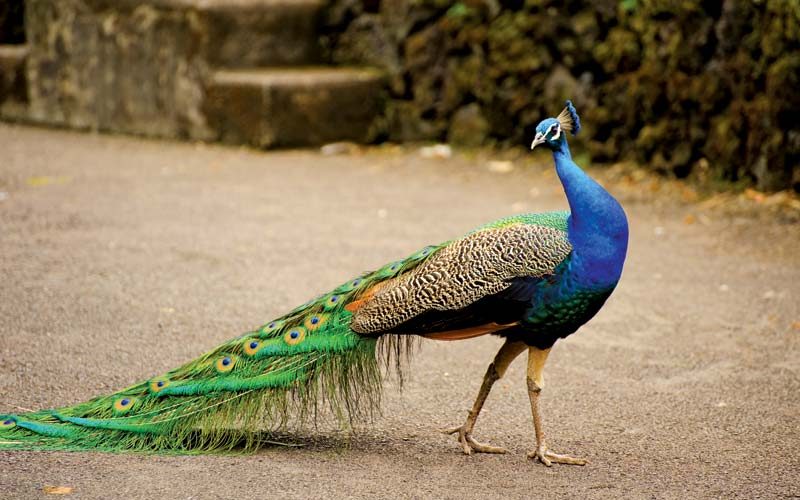Nice Tail? That’s what the Blue Peacock Man gets judged by. He has to, if he wants to enchant a blue peacock woman. First he screams like a cat that has had its tail stepped on. The whine is audible hundreds of meters away. Then he puts up his iridescent upper tail feathers and flaps his “giant wheel”!
Three meters is the diameter of his Tail, which shorter unadorned feathers support below like a corset. Now the rooster makes beautiful eyes at the hen. More than 100 shine towards her from his feathers. And he makes it shake until the female literally lies at his feet.
General information about the peacock
The blue peacock (lat. “Pavo cristatus”) belongs to the order of chicken birds and the family of pheasants. Originally it comes from India and some neighboring countries. Today, however, it is at home worldwide as an ornamental bird.
Where does the peacock live?
In the wild, the peacock particularly likes to live in the hilly part of the rainforest. The chicken bird prefers places near water bodies. During the day, it usually keeps hidden in the dense forest. Then, when it get’s dark, the peacock ventures out into the expanses of fields and meadows in search of food.
Size and weight
From beak to tip, a rooster grows to be about two meters long and weighs about four to six kilograms. Hens are much smaller and lighter.
Nutrition
Peacocks eat flowers, fruits, seeds, insects and small vertebrates.
Reproduction and offspring
Why do the males like to show themselves off so much to the ladies? Well, among peacocks the inconspicuous brownish hens choose the dazzlingly beautiful roosters. And the hens are impressed by an imposing wheel of dense feathers. A magnificent wheel testifies to the rooster’s fitness, and that promises healthier offspring – which, by the way, the rooster will never take care of.
The hen eventually builds a nest in the bushes, where she incubates her three to six eggs and later provides the chicklets
with seeds, berries and insects.
sources:
https://www.britannica.com/animal/peacock
https://www.nationalgeographic.com/animals/birds/facts/peacock

